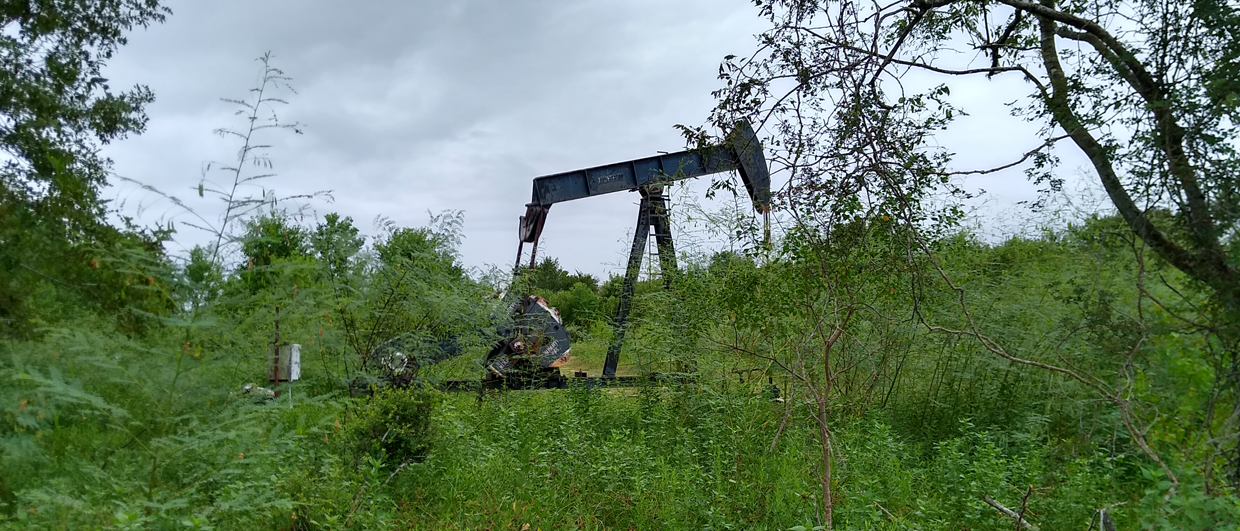It is a murky Friday morning, and it looks as if the sky is about to let go of some more rain anytime. The South Texas plain is flat, vast and green. We approach our destination “Spindletop” and only need to take one more left turn before we reach our destination. But then there is a moment of doubt – the turn is a gravel road across a railroad track, seemingly leading to nothing. Is this the right way to the site where America’s hunt for oil made a lasting impact more than 100 years ago? There is no sign to be seen either.
But it is the right turn. We cross the railroad track, and there is the sign. Spindletop Park.
We are the only visitors, and get out of the car. The thing that we immediately note is the subtle smell of oil. Very fitting given where we are. Then, before strolling to the wooden deck hosting the information panels, we make an observation. There is a pump jack nodding away just ten meters away from us. That is interesting! So here, on this site, where the oil gushed out of the ground 103 years ago, the fluid is still being pumped. On our way, we passed another pump jack where a workover was carried out – another proof that this area isn’t done with oil production yet.
The story about Spindletop is well-known. And every petroleum geologist will understand why this site was such a good prospect, with its slightly elevated terrain providing a clue for the presence of salt in the subsurface. Triggered by the release of gas from the ground around the subtle hill, local mechanic and lumber merchant Patillo Higgins starts to relentlessly push his idea that indeed there is oil to be found at this place. However, he was ridiculed by professional geologists. Daniel Yergin, in his book “The Prize”, even writes that a member of the Texas Geological Society published an article warning “the public against investing in Higgin’s dream.”
It is interesting to note how a non-geologist comes up with an idea about something subsurface-related that is subsequently ridiculed by representatives of the profession. If anything, it shows how anchoring can be an obstacle in allowing fresh ideas coming in. And I’m saying that to myself too. Patillo Higgins was right, even though he may not have been able to articulate his thinking in such a way that made his geological peers keen to listen.
He may indeed not have had the “right” model in mind to explain the presence of hydrocarbons under his feet. Or maybe it was the way Higgins tried to make his point.
But what professional geologists should have done, rather than write a paper warning for a lunatic like Higgins, is to investigate the matter themselves. They did not drill a well to test whether there was oil at Spindletop or not. At the time, with subsurface understanding so much in its infancy, there was a lot of room for blue sky thinking, and surprises even more. If exploring the subsurface still results in unexpected finds today, more than 100 years ago geologists surely should have had some more openness to accepting new ideas. No matter the way it was communicated and no matter someone’s background.

